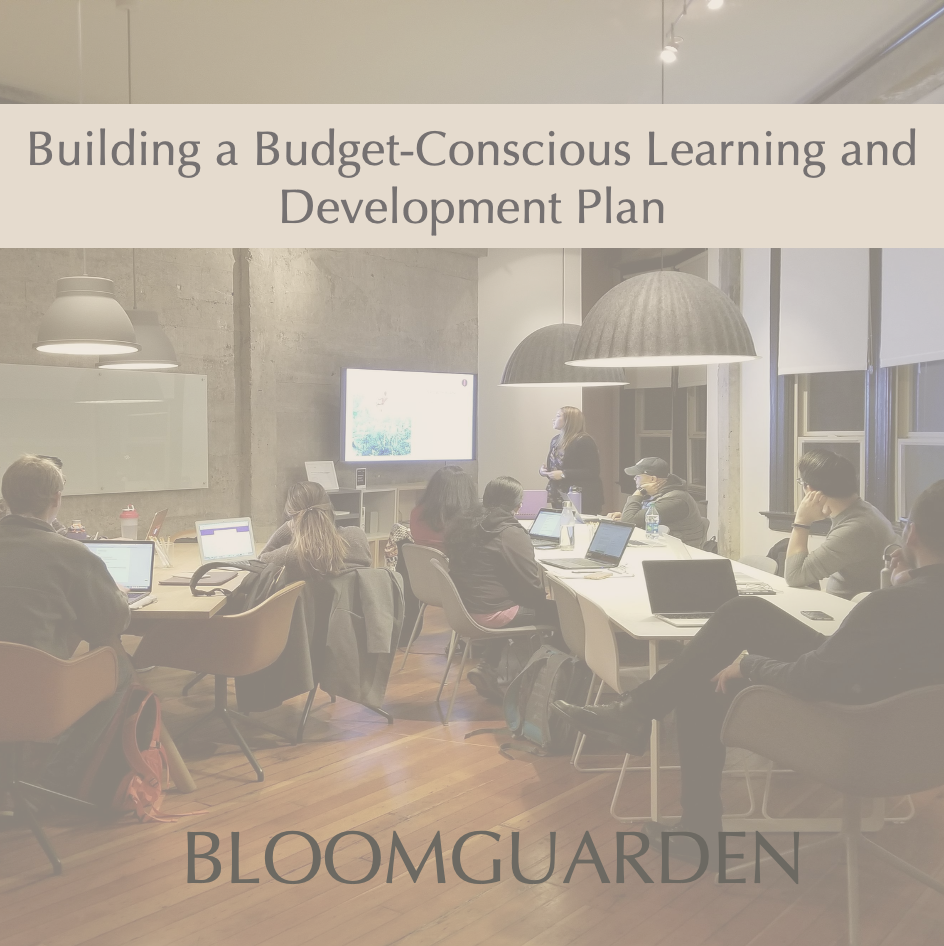Building a Budget-Conscious L&D Plan
Building a Budget-Conscious L&D Plan
Learning and development (L&D) has become a strategic imperative for mid-market and PE-backed organizations—but budget pressures haven’t gone away. In 2025, HR leaders are expected to upskill teams, close capability gaps, and improve retention—without blowing the budget.
The good news? A high-impact L&D plan doesn’t require a seven-figure platform or a sprawling course catalog. With the right structure, companies can create cost-effective learning programs that are aligned, accessible, and outcome-driven.
Why L&D Still Matters (Even When Budgets Are Tight)
While cost containment is top of mind, most HR leaders know that deprioritizing L&D leads to:
· Slower onboarding
· Lower internal mobility
· Increased turnover among ambitious employees
· Poor bench strength for succession planning
A 2024 LinkedIn Workplace Learning Report found that up to 93% of employees would stay longer at a company that invests in their development. For PE-backed firms looking to scale or exit in the next 3–5 years, that statistic isn’t just a retention insight—it’s a value creation opportunity.
Step 1: Focus on Capability, Not Content
Start by defining what the business actually needs people to do better. Forget the catalog for now—think about your org’s short-term goals and longer-term trajectory.
Examples:
· Is your company launching a new vertical? → Train for customer discovery and commercial storytelling.
· Going through M&A integration? → Invest in change leadership and cross-functional collaboration.
· Building internal bench strength? → Focus on people management and critical thinking.
A tightly scoped capability map avoids wasted spend and keeps development relevant to business outcomes.
Step 2: Tier Your Learning Investment
Not every employee needs the same level of depth—or the same delivery format. A layered approach stretches your budget without sacrificing access:
Tier Your Learning Investment
Tip: Consider investing most heavily in the groups that drive the most margin or change—sales leaders, managers, and high-potential successors.
Step 3: Build with What You Already Have
You likely have more learning assets than you think. Audit your existing resources:
· Recorded webinars
· Manager training decks
· Past leadership offsites
· External subscriptions (e.g., Harvard ManageMentor, LinkedIn Learning)
· Subject-matter experts on your own team
Package and rebrand internal content into learning paths. Employees care less about polish—and more about practicality and clarity.
Step 4: Make Managers the Multiplier
Managers are your most powerful (and underutilized) learning channel. Support them to:
· Reinforce learning through 1:1s
· Create safe spaces for skill application
· Recommend specific learning resources
· Model learning themselves
A manager who recommends a course or hosts a team session builds more learning culture than an email blast ever will.
Step 5: Define What “Good” Looks Like
Low-cost doesn’t mean low-rigor. Set clear goals for your L&D plan:
· Participation rate by quarter
· Manager satisfaction with L&D support
· % of stretch roles filled internally
· Pulse survey results on growth opportunities
· Skills readiness in key departments
Use these benchmarks to adjust pacing, content, and delivery.
Common Mistakes to Avoid
· Buying content before knowing what you need
· Equating L&D with expensive tools
· Trying to scale too quickly without usage data
· Leaving managers out of the process
· Focusing on consumption instead of application
Conclusion
A budget-conscious L&D plan isn’t a compromise—it’s a discipline. When designed around capability gaps, internal resources, and focused investment, L&D becomes a strategic asset—not a line item to justify.
For HR teams balancing growth expectations with financial scrutiny, this kind of plan doesn’t just train people—it drives performance, retention, and readiness.
References:
· LinkedIn Learning. (2024). Workplace Learning Report.
· McKinsey & Company. (2023). How L&D Programs Drive Business Performance.
· Harvard Business Review. (2024). Corporate Learning Is Boring — But It Doesn’t Have to Be.
· Bersin by Deloitte. (2010). How to Build a High-Impact Learning Culture.
· Gartner (formerly CEB). (2023). Rethink Manager-Led Development.

